Their work
The success of the company was due primarily to its concentration on child- and youth-literature, [4] as well as their focus on the literary preferences of the middle classes and their production of cheap and popular books in large quantities. [5] They developed the Egyetemes Regénytár (Universal Novel Library) series based on the model of the German Engelhorn Verlag as the result of their recognition of the reading public's desire for literature that entertained. During these times, in addition to the development of old writers, many new talents were cultivated. As a result, Singer and Wolfner became the publisher of young writers, for example Ferenc Herczeg, [6] Géza Gárdonyi, Sandor Brody, Zoltan Ambrus, Ignotus and Viktor Rakosi. [7] The firm published a significant portion of the works of the emerging young authors in the 1890s.
The business
Around the beginning of the twentieth century, modern and high-class bookstores began to appear in Hungary. When Singer and Wolfner's bookstore opened on the Andrassy road, the firm had been in business for almost 26 years and established itself as a major force in publishing. As a result, it had a significant advantage over the newly established stores. Singer and Wolfner publishers had moved to 16 Andrassy Rd. in 1912. The store was on the main floor which, according to contemporary sources, was the most beautiful and modern one anywhere in the (Austro-Hungarian) Monarchy.
The editorial offices, located above the bookstore, was where the popular weekly magazines, En Ujsagom (My Newspaper) and Magyar Lanyok (Hungarian Girls) were published. The interior of the business, the furniture, the giant bronze chandeliers, the painting, the displays and the facades were planned by Géza Maróti, a sculptor. The woodwork was the work of Joseph Kiss, a carpenter. The storage shelves stretched from floor to ceiling and the many outstanding creations were surprisingly well organized and easily observable.
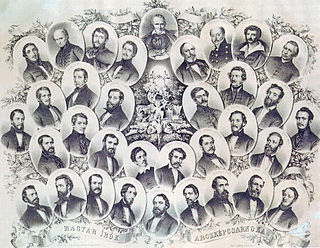
Hungarian literature is the body of written works primarily produced in Hungarian, and may also include works written in other languages, either produced by Hungarians or having topics which are closely related to Hungarian culture. While it was less known in the English-speaking world for centuries, Hungary's literature gained renown in the 19th and 20th centuries, thanks to a new wave of internationally accessible writers like Mór Jókai, Antal Szerb, Sándor Márai, Imre Kertész and Magda Szabó.
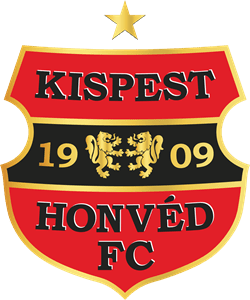
Budapest Honvéd Football Club, commonly known as Budapest Honvéd or simply Honvéd, is a Hungarian sports club based in Kispest, Budapest, with the colours of red and black. The club is best known for its football team. Honvéd means the Homeland Defence. Originally formed as Kispest AC, they became Kispest FC in 1926 before reverting to their original name in 1944.
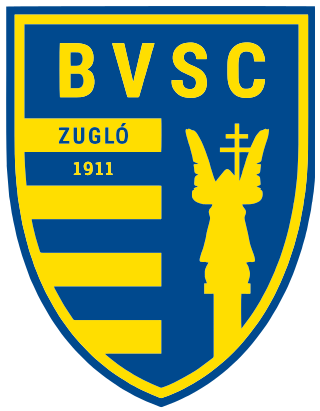
Budapesti Vasutas Sport Club-Zugló commonly known as BVSC-Zugló is a professional football club based in Zugló, Budapest, Hungary, that competes in the Nemzeti Bajnokság II. The club was founded in 1911. Its football section became closed in 2001, but has now reopened, while other sections that are still operational are table tennis, wrestling, water polo. The table tennis department won the European Cup of 1980 and several national championships.

József Farkas de Boldogfa was a Hungarian nobleman, jurist, landowner, politician, Member of the Hungarian Parliament.
István Farkas was a Hungarian painter, publisher and victim of the Holocaust.
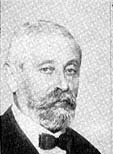
Jozsef Wolfner was a Hungarian publisher, founder of the publishing house Singer and Wolfner.
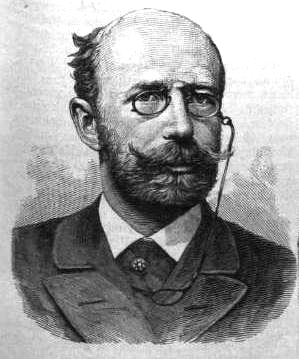
Béla Ferenc József Grünwald de Bártfa was a Hungarian nationalist politician and historian who was active in Upper Hungary.

Károly Frenreisz (born 8 November 1946, Budapest, Hungary) is a Hungarian rock singer and songwriter.
László Jászai is a Hungarian actor.
Aurora Publishing was a German-Hungarian publishing company, established in 1963 in Munich by József Molnár. It published 2 to 3 volumes annually, which, until 1983, were printed in-house. They published some 60 volumes until 1990, and the volumes are grouped into sets, "Aurora Kiskönyvtár" and "Aurora Kiskönyvek". Molnár also published a series on church history entitled Dissertationes Hungaricae ex historia Ecclesiae. In some volumes, Aurora Publishing is sometimes simply listed as Aurora or even as Molnár Ny or Molnár. The reason for the existence of Aurora disappeared with the fall of communism. Molnár endeavoured to publish the works of contemporary émigré Hungarian authors, including:
Ferenc Farkas de Boldogfa was a Jesuit priest, parish priest of Nemesapáti, poet, and master canon of the Diocese of Veszprém.

András Kenessei is a Hungarian art historian, writer and journalist.

Attila Bartis is a Romanian-born Hungarian writer, photographer, dramatist and journalist. He received the Attila József Prize in 2005. His books have been translated into over 20 different languages. In 2001, he published his second novel, Tranquility, which was adapted into film in 2008. In 2017, he became a member of the Széchenyi Academy of Literature and Arts.
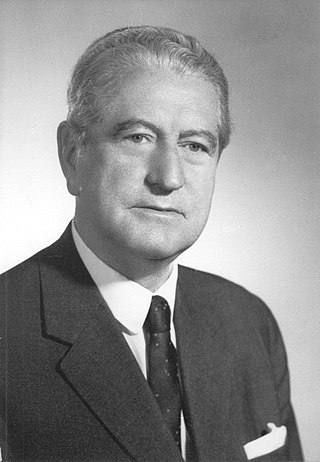
Kálmán Kádas was a Hungarian engineer, economist, statistician, transport economics author and professor, co-worker of Farkas Heller, doctor of engineering (1974).

The Life and works of Hungarian writers is a lexicon of Hungarian literature written at the turn of the century by József Szinnyei. The 14-volume work, published between 1891 and 1914, sought to bring together all those who had published a literary work published in their hands. The life and work of Hungarian writers is still a masterpiece and one of the greatest simple literary works.

Magvető is a Hungarian book publishing company based in Budapest. It primarily publishes domestic and international works of literary fiction.

The Faculty of Law of Eötvös Loránd University was founded in 1667 and it is located in Egyetem tér in Belváros-Lipótváros, Budapest, Hungary.
This page is based on this
Wikipedia article Text is available under the
CC BY-SA 4.0 license; additional terms may apply.
Images, videos and audio are available under their respective licenses.













